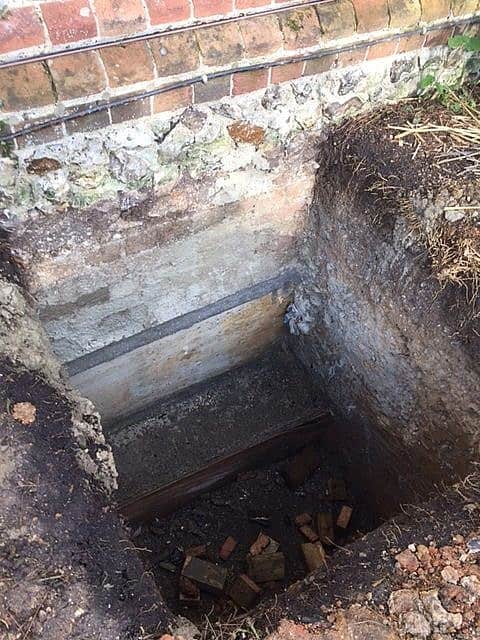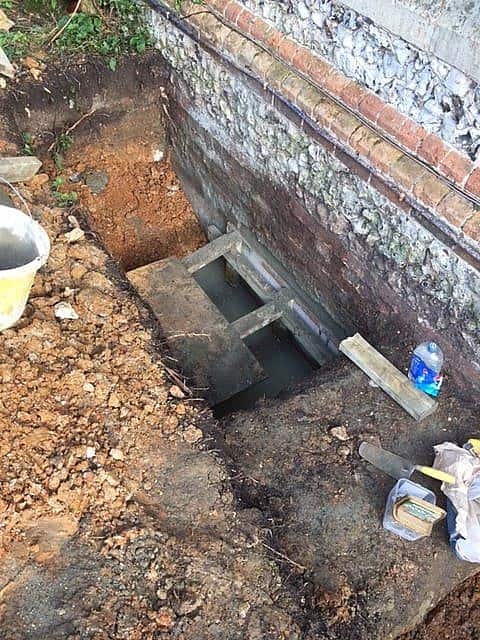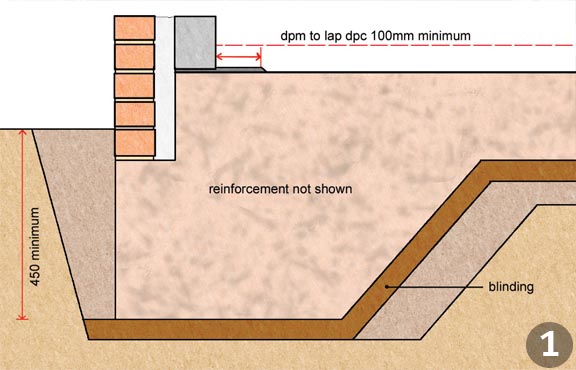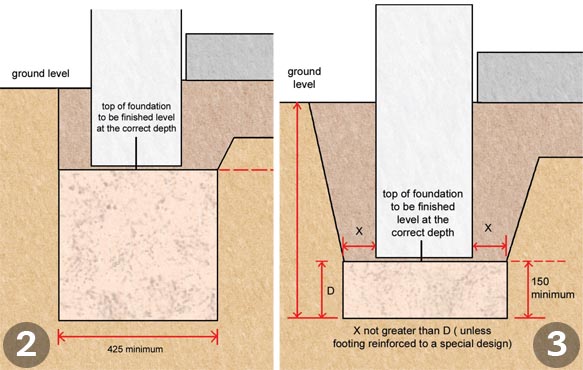We pride ourself in the high quality of property renovation services we offer. If you are about to start a property renovation project, whether its an extension or basement conversion, make sure your architect is on point with regards to the type and depth of foundation needed. Starting a property renovation project is daunting to say the least. As a homeowner, the question of “where to start?” is often overwhelming.
The SDA Build London team takes care of it all, from start to finish so that you don’t have to worry about the technical and regulatory requirements. Please do not hesitate to give us a call or e-mail us if you want any advice at all.
For a complete property renovation project, we usually start with the foundations. Various factors need to be considered including current foundation depths, soil composition and drainage systems amongst others. It’s key to get the foundation right when you are undertaking an extensive property renovation project. A foundation will not get passed by building control who will deem it unsafe for habitation if the latest building control regulations and standards are not adhered to. Before commencing full-blown excavations, we recommend that your builder digs a small area to assess current foundation depths. It is advisable to call your building control surveyor at this stage, who will be able to advise you on the depth and type of foundation you will require for your project.
Sourced from the Homebuilding & Renovation website, we found a handy guide on getting your foundation going.
What is a Soil Survey and Do I Need One?
A soil survey or investigation can help determine the type of foundations needed. This involves holes being dug at various points on the site and extrapolating the findings in each hole to assume the subsoil conditions throughout the site.
Soil investigations can prove very useful but are not a prerequisite. Most sites start without a formal soil investigation, relying instead on either the knowledge of the designer, or the local expertise of the building inspector.
What Type of Foundations Do I Need?
Simple Foundations
The standard routine is to place as little solid concrete as possible into trenches (minimum of 250mm) and then to build up from this in blockwork until ground level, where the walls switch to brick or stone or whatever the chosen external cladding should be.
This is known as a strip foundation (see image 3 below). A widely used alternative is to fill the trenches with ready-mix concrete to just below ground level (trenchfill, image 2) which saves labour but adds to foundation costs. Just above ground level, the footings are topped with a damp-proof course and then the ground floor is fixed.
Engineered Foundations
If the ground is deemed to be difficult, there are a number of options — all of them considerably more expensive than straightforward foundations.
The simplest solution is just to dig the foundation trenches deeper and then fill with a much greater depth of concrete, sometimes fitting sheets of polystyrene beside the trenches to act as a slip membrane.
However, there comes a depth (around 2.5m deep) beyond which it becomes impractical and dangerous to work, and the amount of concrete needed to fill the space becomes prohibitively expensive.
If the site requires deep foundations in more than a couple of spots, then it is now usual to use a different approach, most often piling, occasionally using concrete rafts.
Piled Foundations
Some housebuilders now use piled foundations on every site because the costs are predictable. Piles are driven into the ground and then filled with concrete, and the whole foundation gets topped with a ground beam to build off.
Raft Foundations
As the name suggests, a concrete raft is designed to ‘float’ on the ground beneath. The structure is made up of an extra-thick floor slab, strengthened by masses on steel reinforcing. Rafts have the advantage of providing the base of a ground floor solution, not just wall trenching, but they are reckoned to be rather more complex to construct.
How Much Will My Foundations Cost?
Try as you might, the foundations are the one part of a building project that you cannot fully plan out until you start on site. Ground conditions vary and often problems only make themselves known when you break ground.
Costs will also vary depending on the foundation type you choose, with strip foundations being the least expensive.
It is also worth ensuring that you have a contingency budget available at this stage to be able to react to any unforeseen issues that may occur when you break ground.
How Do I Prepare the Site for Foundations?
A datum level must be set up for the eventual oversite level so that all trenches can be dug to accommodate that. On sloping ground, or with a design that employs differing oversite levels, that may mean that you should be prepared for shuttering with suitable 50x100mm timber.
You will typically need:
- mesh reinforcement in the foundation concrete
- compressible material for lining the trenches
- a polythene slip membrane
- cut metal pins to use as markers ready on site
- several rakes and pairs of wellies (you’ll be surprised how many people turn up for work in trainers)
- to be aware of any lead-in times. If the engineers have designed a foundation that requires reinforcement cages, these may have to be manufactured off site
- to think ahead to getting the services into the house, so get some lengths of pipe or ducting to take through the concrete.
What Factors Can Affect Foundations?
Tree Roots
Where the foundations are affected by tree roots (or their previous removal), you may be required to employ a fairly deep trench filled with concrete but with a compressible material to one or both sides of the external trenches to counteract any heave or expansion in the ground.
Water Pipes
Water pipes must enter the building at a depth of at least 750mm but no more than 1.35m below ground. If that means that they pass through a concrete foundation then they must either be laid prior to pouring or, better still, a duct installed for them to be pushed through later.
Sewage Pipes
If sewage pipes leaving the building have to be deeper than the top of the foundation concrete then they should also be ducted; they cannot be trapped within the concrete and must be able to move freely.
Electricity and Gas
Electricity and gas don’t usually need to be ducted or installed at this point as they are normally surface mounted. Finally, the building and warranty inspectors will have to approve the excavated foundations prior to any concrete being poured.
The information above is technical in nature and usually it’s your architect, builder and building control surveyor who will manage these details. However, if it’s your home or a home that you are developing to sell, we believe it’s important for you to have as much information as possible.
If you are thinking about a rebuild or a refurbishment of a property you own, why not get us around for a FREE, no obligation consultation. One of our experienced colleagues will visit your site, discuss your needs and give you our recommendations.




